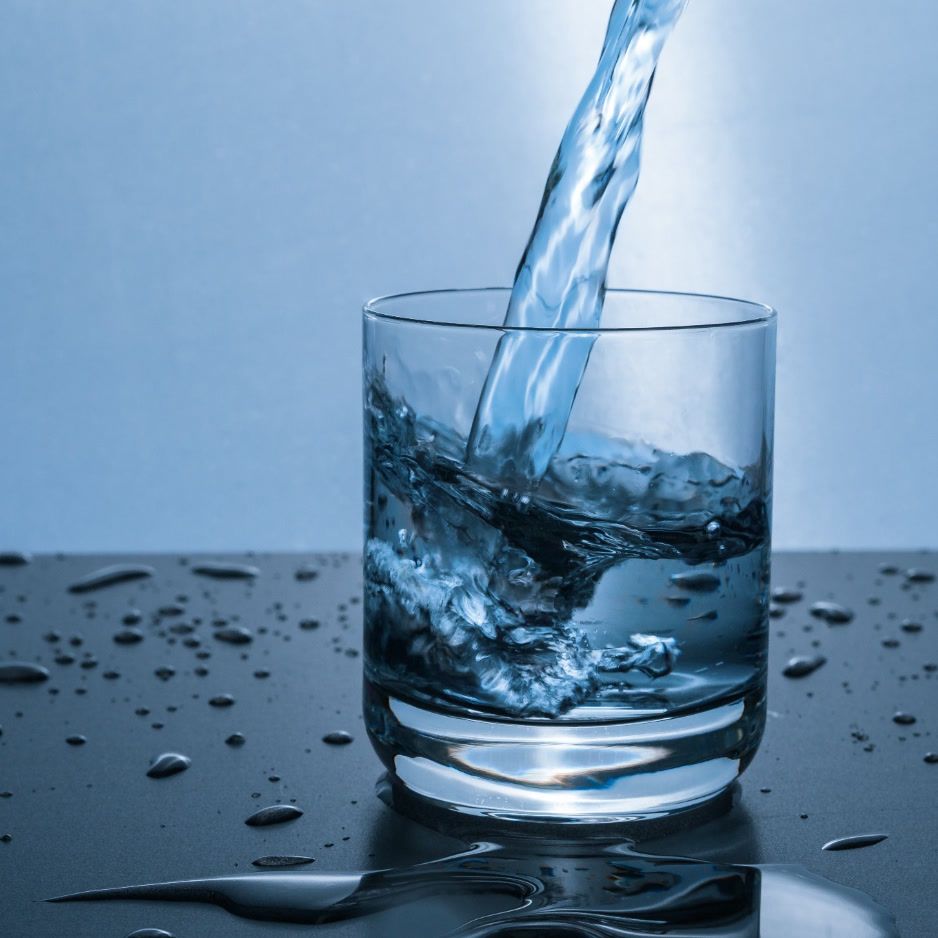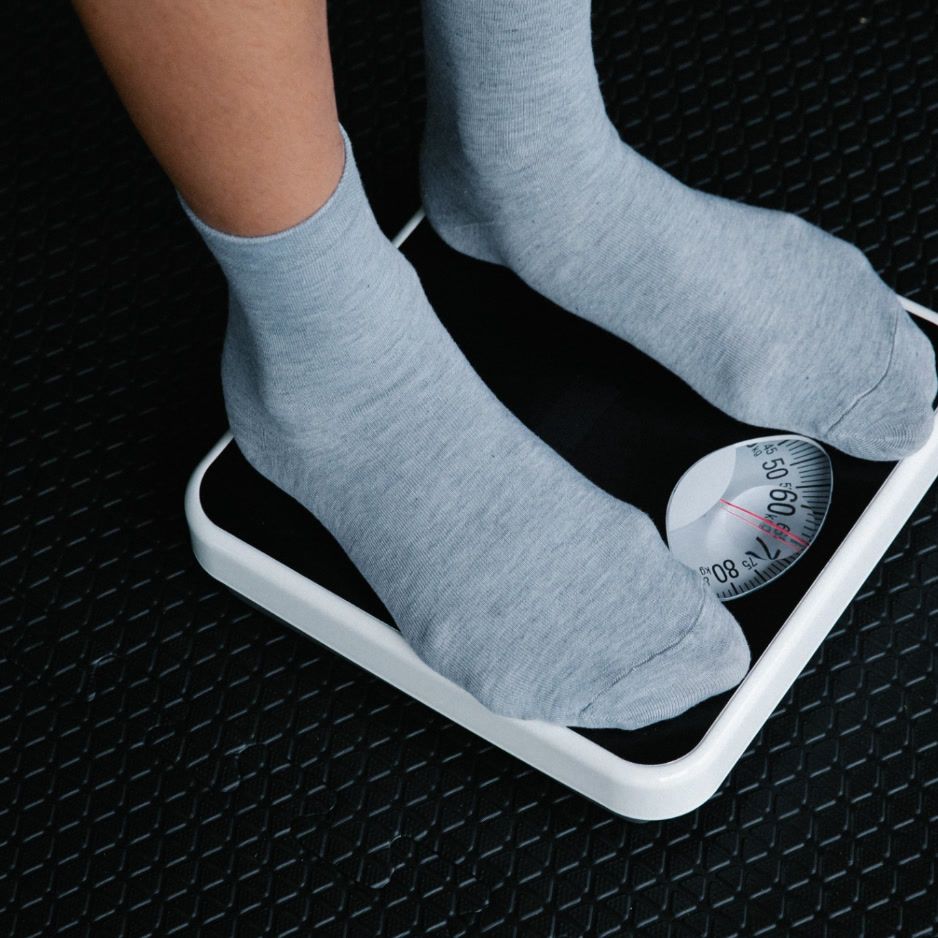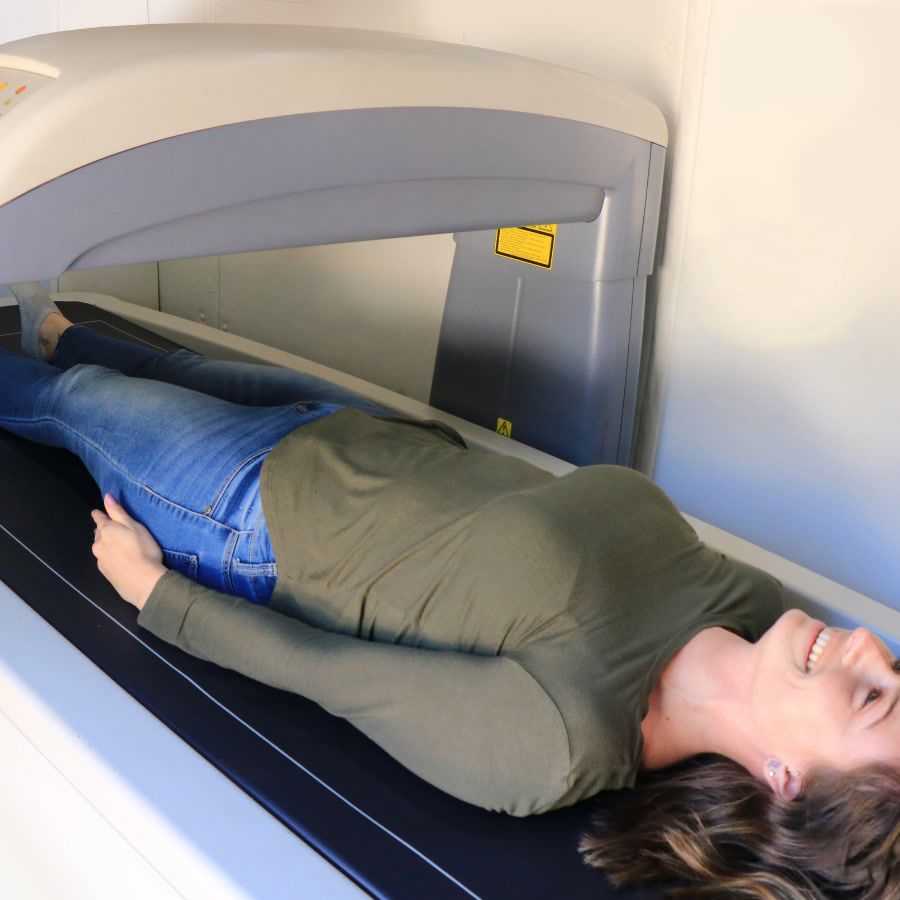Mediterranean vs. Paleo Diet: Complete Comparison Guide
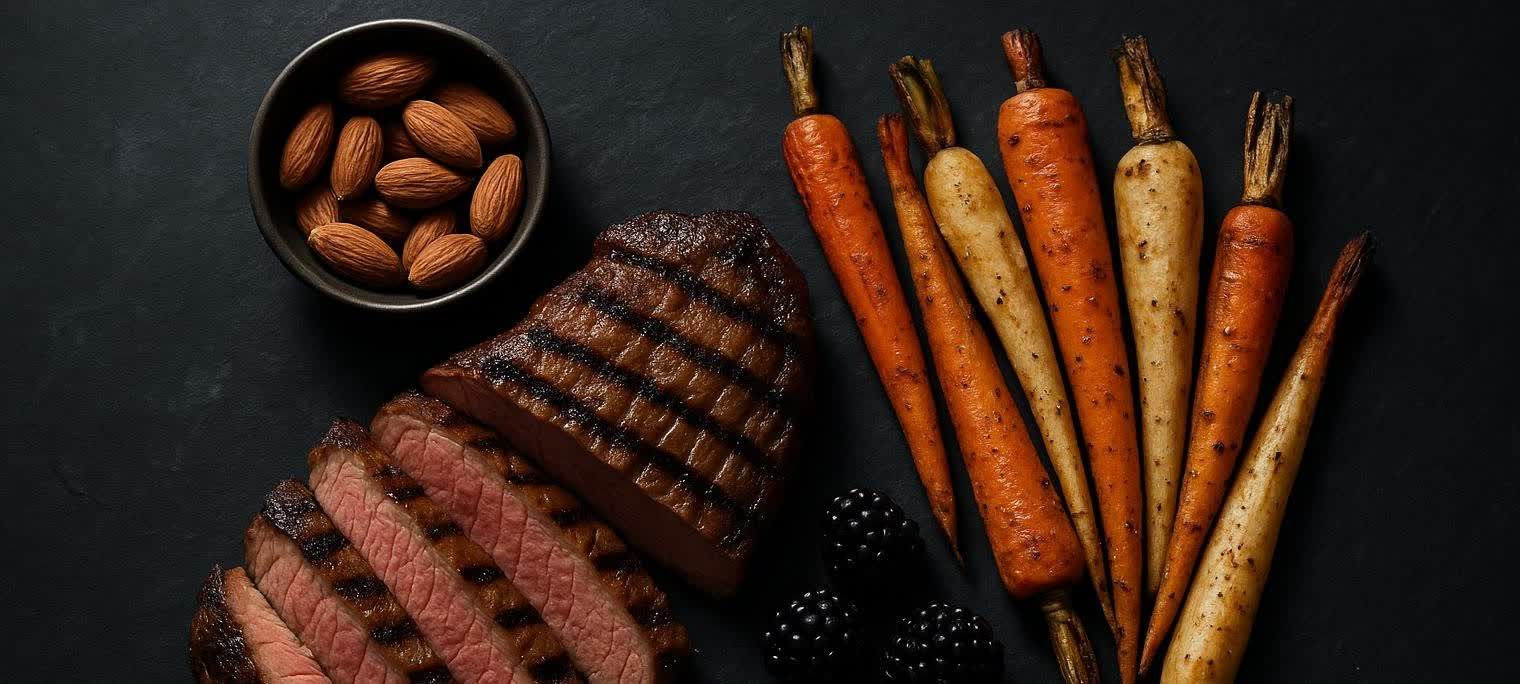
Last updated October 2025.
Mediterranean vs. Paleo Diet: A Complete Comparison
If you’re comparing the mediterranean vs paleo diet, you’re likely deciding which approach best fits your goals for heart health, blood sugar, weight, and performance. This guide distills the latest evidence and highlights pros and cons. You’ll also get three 7-day meal planners you can tailor to your lifestyle—and see how to use DEXA to objectively track changes in your body composition.
Table of contents
- Quick verdict
- How each diet works (what you eat and avoid)
- What the science says: head-to-head on outcomes
- Macros, performance, and satiety
- Pros and cons at a glance
- Environmental impact: carbon, land, and water
- Who should choose which?
- 7-day meal planners by goal and lifestyle
- FAQs
- Tracking progress: why DEXA beats the scale
Quick verdict
For most people, the Mediterranean diet has the strongest evidence for better heart health, blood sugar, sustainable weight loss, and long-term adherence. A well-planned Paleo approach can work if you prefer lower-grain, unprocessed eating—just manage nutrient gaps and time carbs around training.
- Heart health and longevity: Mediterranean wins on the strength of randomized trials and large cohorts showing fewer major events and lower mortality (meta-analysis of randomized trials; women-focused systematic review and meta-analysis; 25-year cohort mediation analysis in US women).
- Blood sugar and type 2 diabetes: Mediterranean shows consistent HbA1c and fasting glucose improvements across trials and reviews. Paleo shows promising short-term improvements in small, short-duration studies, but long-term, high-quality evidence remains limited (Mayo Clinic overview; example 3-month T2D trial).
- Body composition: An energy-reduced Mediterranean diet plus physical activity produced meaningful reductions in total and visceral fat on DEXA while preserving lean-mass percentage over 3 years.
- Adherence and sustainability: Mediterranean is flexible, budget-friendly, and easier to maintain, which matters for long-term outcomes (Harvard Nutrition Source overview).
- Environment: Mediterranean’s plant-forward pattern tends to have a lower environmental footprint than meat-heavy patterns. Beef and lamb carry outsized emissions; shifting toward legumes, grains, nuts, and seafood lowers impact (Our World in Data explainer; Spanish environmental footprint analysis).
How each diet works (what you eat and avoid)
-
Mediterranean (Harvard Nutrition Source)
- Eat more: vegetables, fruits, whole grains, legumes, nuts, seeds, herbs/spices; olive oil as the primary fat; fish/seafood often.
- In moderation: poultry, eggs, dairy (cheese/yogurt); optional moderate wine with meals if you already drink alcohol.
- Limit/avoid: red and processed meats, ultra-processed foods, excess added sugars.
- Lifestyle: daily physical activity and shared meals support adherence.
-
Paleo (Mayo Clinic overview)
- Eat more: lean meats, fish, eggs, vegetables, fruits, nuts, seeds.
- Avoid/exclude: grains, legumes, dairy, added sugars, and highly processed foods.
- Watch-outs: potential nutrient gaps (e.g., calcium, fiber, some B vitamins) without careful planning; consider seafood, leafy greens, nuts/seeds, and clinician-guided supplementation.
What the science says: head-to-head on outcomes
Cardiovascular events and mortality
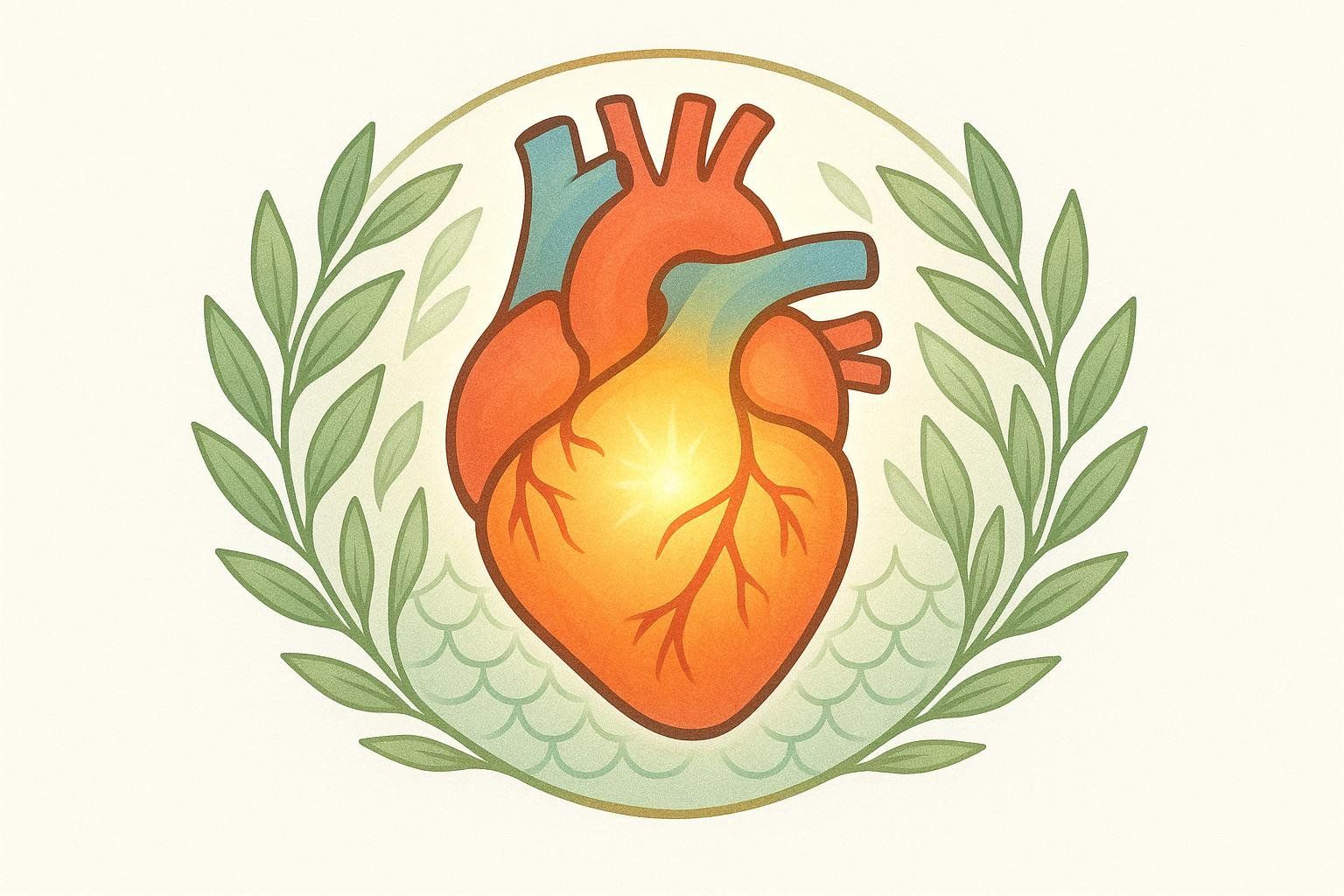
- A Mediterranean diet reduces major adverse cardiovascular events, myocardial infarction, stroke, and cardiovascular death in randomized trials (meta-analysis).
- In women, higher Mediterranean adherence was associated with 24% lower CVD and 23% lower total mortality (Heart meta-analysis); similar benefits appeared in men in sex-stratified data.
- Among 25,000 US women followed for 25 years, higher Mediterranean scores were linked to 23% lower all-cause mortality, partly mediated by inflammation, insulin resistance, and triglyceride-rich lipoproteins (JAMA Netw Open).
For Paleo, clinical evidence on hard CVD outcomes is sparse; most trials are small and short-term, focusing on intermediates (lipids, blood pressure, weight). Reviews note potential benefits but call for longer, higher-quality RCTs (Cardiovascular Diabetology review, 2024; Mayo Clinic overview).
Prediabetes, type 2 diabetes, and glycemic control
- Mediterranean: An RCT meta-analysis in T2D shows about a 0.39% HbA1c reduction plus lower fasting glucose and blood pressure. Broad reviews also support lower diabetes risk and better glucose control with Mediterranean diet patterns (EPMA J review).
- Paleo: Short-term interventions report improved fasting glucose, HbA1c, and insulin sensitivity over 8–12 weeks, especially with weight loss, but samples are small and follow-up brief (see an example 3-month T2D trial; summarized in the Cardiovascular Diabetology review).
Body composition and visceral fat
- In PREDIMED-Plus, combining an energy-reduced Mediterranean diet with physical activity led to significant reductions in total and visceral fat and improved lean-to-fat ratio on DEXA over 1–3 years.
- Both diets can support weight loss when calories are controlled, but Mediterranean has stronger long-term adherence data—critical for maintaining fat loss and preserving lean mass.
For losing harmful belly fat specifically, see our step-by-step plan: How to Lose Visceral Fat.
Macros, performance, and satiety
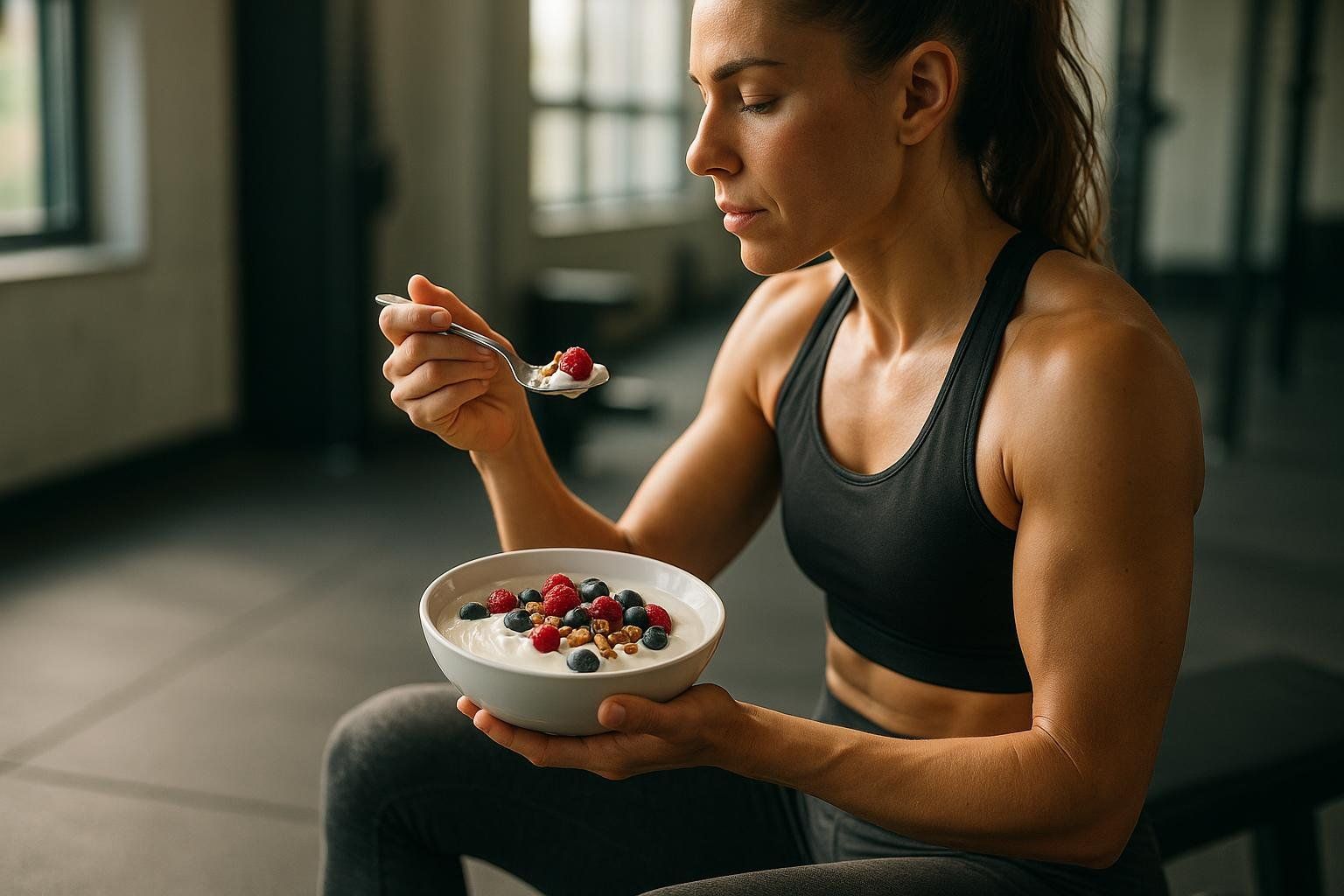
- Mediterranean typically lands as moderate carbohydrate, moderate-to-higher unsaturated fat, and moderate protein. It pairs well with higher training volumes because whole-grain and legume carbs refill glycogen effectively.
- Paleo often trends lower in carbohydrates if starchy roots and fruit aren’t emphasized, which some people find helpful for appetite control. Athletes on Paleo may need deliberate carb timing (e.g., potatoes, fruit, or honey around workouts) to avoid energy dips.
Whichever you choose, hitting daily protein targets supports muscle and satiety. A practical range is 1.6–2.2 g/kg per day with even distribution across meals. For help setting targets, see: The Ultimate Guide to Tracking Macros and Lean Bulk Meal Plan.
Pros and cons at a glance
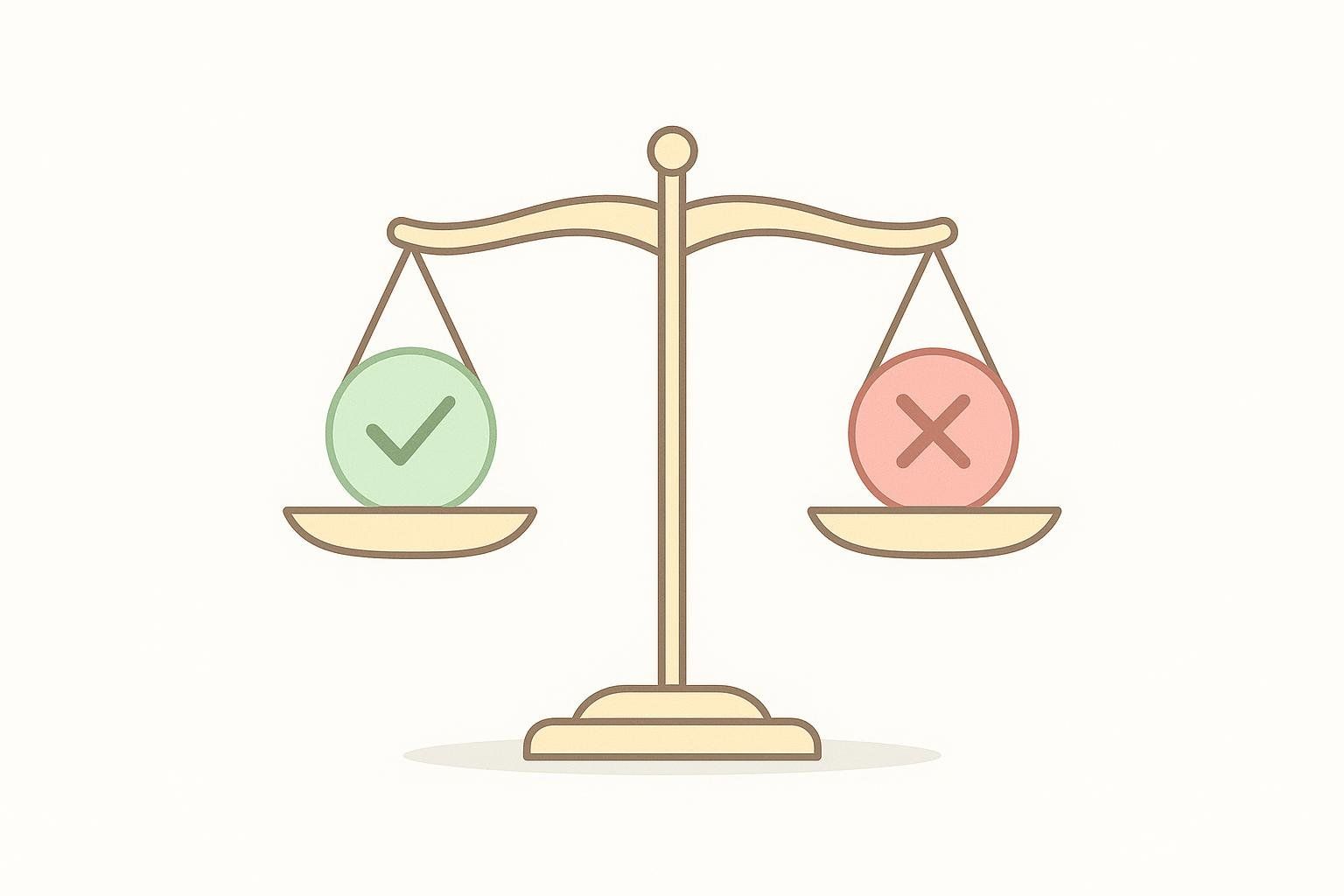
| Factor | Mediterranean | Paleo |
|---|---|---|
| Evidence for CVD risk reduction | RCTs and cohorts show fewer events and lower CVD mortality and lower CVD and total mortality in women | Limited long-term RCT data on hard outcomes |
| Glycemic control | T2D RCTs show lower HbA1c and fasting glucose | Short-term improvements reported in small studies |
| Body composition | Energy-reduced Med + PA reduced VAT and fat mass on DEXA | Can support weight loss; manage carb timing for training |
| Adherence and cost | Flexible, budget-friendly, culturally adaptable (Harvard overview) | More restrictive; potential nutrient gaps without planning (Mayo Clinic) |
| Environmental impact | Plant-forward pattern has lower average footprint and large reductions vs. Western pattern in Spain | Meat-heavy patterns trend higher footprint unless optimized |
Environmental impact: carbon, land, and water
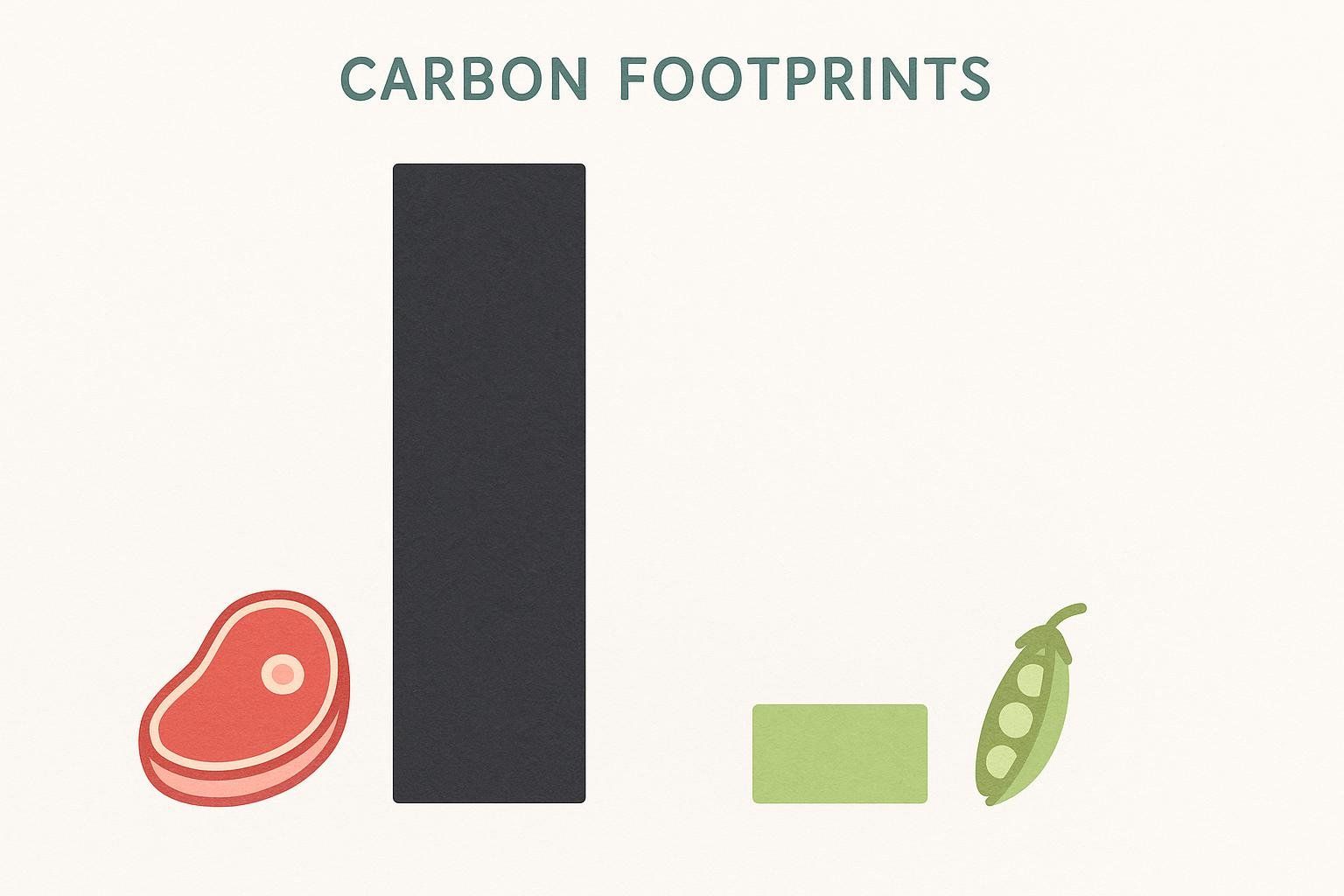
Food systems create ~26% of global greenhouse gas emissions; what we eat matters more than how far it traveled. Producing 1 kg of beef averages ~60 kg CO2e, while peas are ~1 kg—an enormous gap. Shifting intake from red meat toward legumes, grains, and nuts substantially lowers diet-related emissions (Our World in Data explainer). In Spain, modeling suggests that adherence to a Mediterranean pattern would cut GHG emissions ~72%, land use ~58%, and energy use ~52% (Environmental Health study) compared with current intakes, while a Western pattern raises footprints.
Because Paleo often increases red meat and excludes legumes/grains/dairy, its average environmental footprint may be higher unless seafood, poultry, eggs, tubers, and abundant vegetables are emphasized.
Who should choose which?
- Choose Mediterranean if you want the most validated path for heart health, blood pressure, and glycemic control, with high adherence and budget flexibility. Great for family meals and long-term maintenance.
- Consider Paleo if you feel better on lower-grain patterns, want an elimination-style reset to reduce ultra-processed foods, or are working (with a clinician) through specific gut/autoimmune concerns. Ensure adequate intake of nutrients like calcium, fiber, and B vitamins through seafood, leafy greens, nuts/seeds, and strategic supplementation if needed (Mayo Clinic overview). See our primer: guide to unprocessed foods.
If insulin resistance or belly fat is a concern, pair your diet with strength training and cardio. Track visceral fat objectively: How to Lose Visceral Fat and Insulin Resistance & Weight Loss Guide.
7-day meal planners by goal and lifestyle
Note: Calorie and macro targets are examples—adjust with our macro guide and confirm with your clinician if you have medical conditions. Batch-prep proteins and starches once per week to save time. Simple grocery lists are included below each planner to guide your shopping.
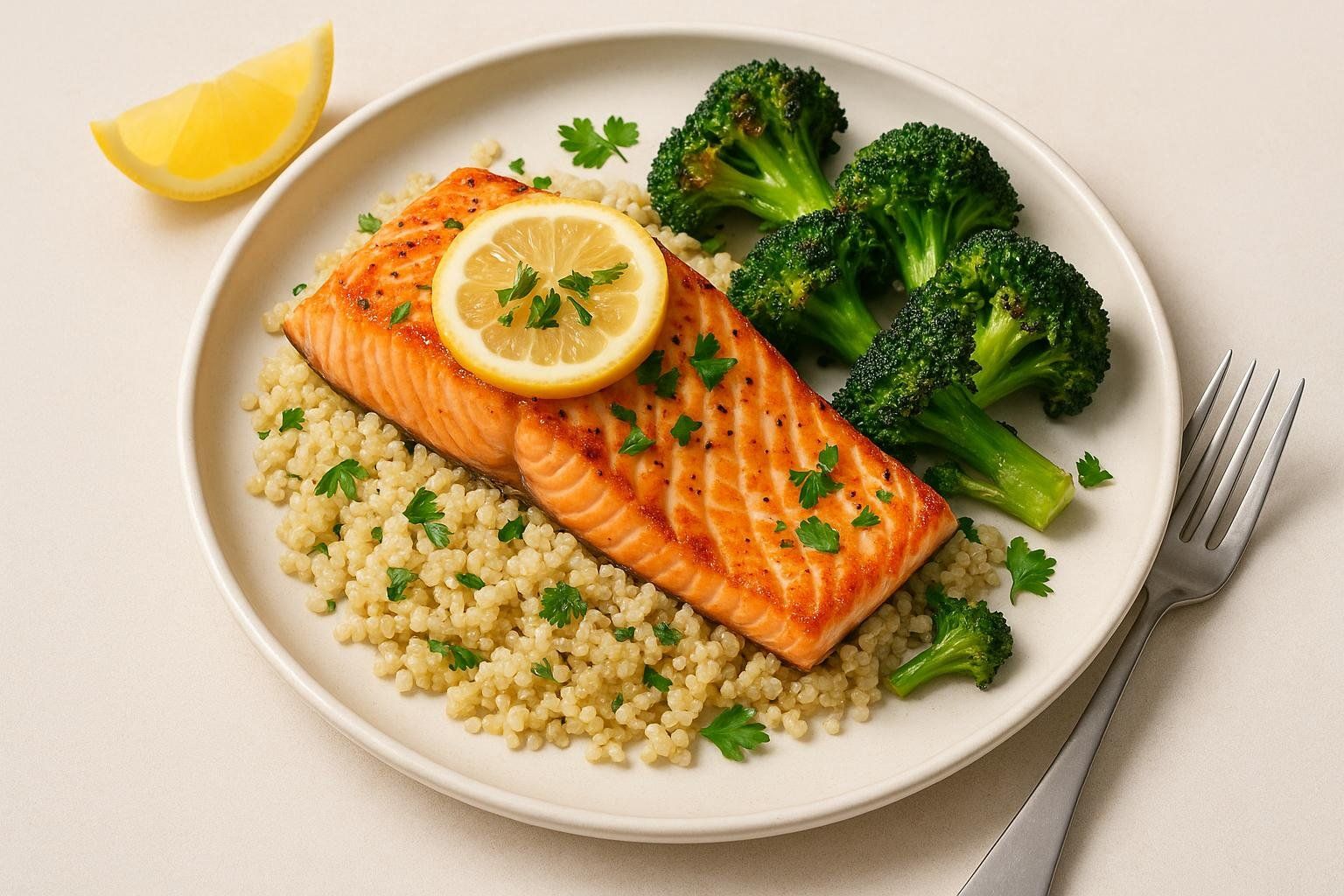
Planner A: Busy professional aiming for heart health and steady weight loss (Mediterranean)
Target (example): 1,800–2,000 kcal/day; ~30% protein, 40% carb, 30% fat; 30+ g fiber
| Day | Breakfast | Lunch | Dinner | Snacks |
|---|---|---|---|---|
| Mon | Greek yogurt, berries, oats, chia | Chickpea + tuna salad, olive oil vinaigrette | Salmon, quinoa, roasted broccoli | Apple + almonds; carrots + hummus |
| Tue | Veggie omelet + whole-grain toast | Lentil soup + side salad | Chicken souvlaki, farro, cucumber-tomato salad | Cottage cheese + pineapple |
| Wed | Overnight oats (walnuts, cinnamon) | Mediterranean bowl: brown rice, white beans, olives, feta, veggies | Shrimp + whole-wheat pasta + spinach | Pear + pistachios |
| Thu | Smoothie: kefir, banana, spinach, flax | Sardine avocado toast (whole-grain), arugula | Turkey meatballs, barley, ratatouille | Yogurt + honey + walnuts |
| Fri | Egg + tomato + feta wrap | Quinoa tabbouleh + grilled chicken | Cod, roasted potatoes, green beans almondine | Dark chocolate square + orange |
| Sat | Scrambled eggs with spinach and feta | Falafel bowl (baked), tahini, salad | Veggie paella with chickpeas | Hummus + bell peppers |
| Sun | Protein pancakes, berries, skyr | Leftover paella + side salad | Roast chicken, bulgur, roast carrots | A handful of olives |
Grocery quick list:
- Protein & dairy: Greek yogurt/skyr; eggs; salmon, cod, shrimp; chicken; turkey
- Whole grains & legumes: oats; quinoa; farro; barley; whole-wheat pasta; chickpeas; lentils; white beans
- Produce: leafy greens; colorful vegetables; berries; citrus
- Fats & flavorings: extra-virgin olive oil; nuts and seeds; herbs/spices
Planner B: Gym-goer focused on lean muscle with good energy (Mediterranean or Paleo)
Option 1: Mediterranean performance (training days slightly higher carb)
For macro templates, grocery lists, and scan-based progress checks, see the Lean Bulk Meal Plan.
- Target (example): 2,600–2,900 kcal/day; ~25% protein, 50% carb, 25% fat
| Day | Breakfast | Lunch | Dinner | Workout Fuel |
|---|---|---|---|---|
| Mon | Eggs + potatoes + spinach | Double-chicken burrito bowl (rice/beans) | Salmon + couscous + asparagus | Pre: banana; Post: yogurt + honey |
| Tue | Greek yogurt + granola + berries | Turkey pesto sandwich (whole grain) + lentil soup | Beef stir-fry + jasmine rice | Pre: toast + jam; Post: chocolate milk |
| Wed | Oatmeal + peanut butter + banana | Tuna + white bean salad + sourdough | Shrimp or tofu pasta primavera | Pre: apple; Post: skyr |
| Thu | Omelet + toast + avocado | Chickpea pasta bowl + chicken | Baked cod + potatoes + greens | Pre: banana; Post: kefir smoothie |
| Fri | Smoothie bowl (kefir, oats, berries) | Sushi or poke bowl (rice + edamame) | Turkey burgers + whole-wheat buns + salad | Pre: rice cakes; Post: yogurt with berries |
| Sat | Protein waffles + fruit | Leftovers + salad | Paella or risotto with seafood | Pre: a handful of grapes; Post: skyr with a drizzle of maple syrup |
| Sun | Whole-grain toast + lox + capers | Whole-grain bowl + beans | Roast chicken + polenta + veg | Rest day |
Mediterranean grocery quick list:
- Protein & dairy: eggs; Greek yogurt/skyr; fish/seafood; poultry
- Grains & legumes: oats; brown rice; couscous; whole-wheat pasta; white beans; lentils
- Produce: leafy greens; colorful vegetables; bananas; berries
- Fats & flavorings: extra-virgin olive oil; nuts/seeds; herbs/spices
Option 2: Paleo Performance Plan
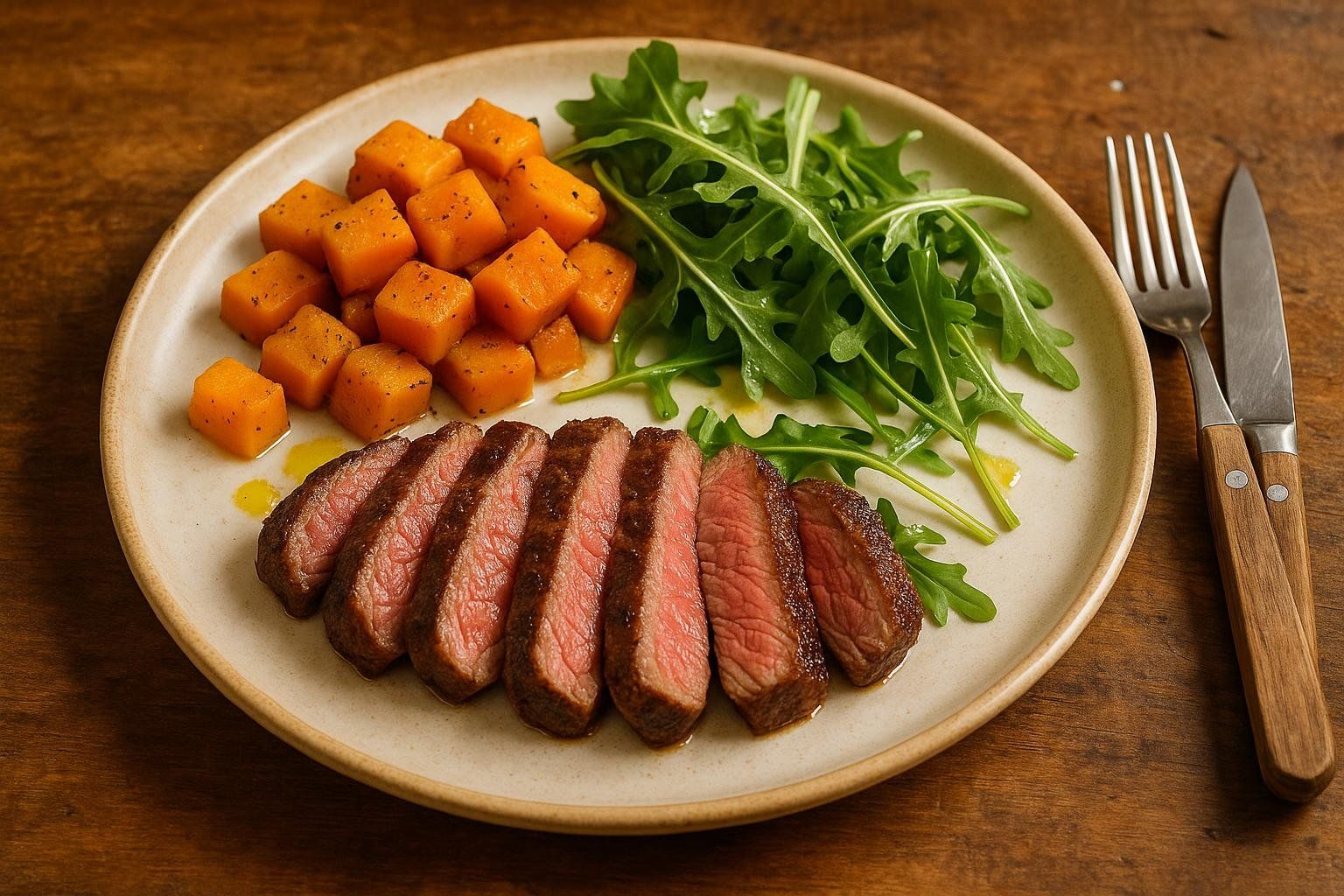
Time carbohydrates strategically around workouts using potatoes, fruit, and squash to maintain performance while staying Paleo-aligned. For macro templates and grocery lists tailored to muscle gain, see the Lean Bulk Meal Plan.
- Target (example): 2,600–2,900 kcal/day; ~30% protein, 30–35% carb, 35–40% fat
| Day | Breakfast | Lunch | Dinner | Workout Fuel |
|---|---|---|---|---|
| Mon | Eggs + sweet potatoes + avocado | Chicken salad lettuce wraps + fruit | Salmon + roasted potatoes + broccoli | Pre: banana; Post: Paleo-friendly protein powder + banana |
| Tue | Veggie scramble + berries | Shrimp + cauliflower “rice” + mango salsa | Steak + squash + salad | Pre: small sweet potato; Post: 2–3 hardboiled eggs + banana |
| Wed | Chia pudding (coconut milk) + fruit | Turkey patties + roasted roots + greens | Cod + plantain + slaw | Pre: banana; Post: Paleo-friendly protein powder + banana |
| Thu | Omelet + potatoes + olive oil | Sardines + avocado + salad | Chicken thighs + potatoes + green beans | Pre: banana; Post: no-sugar jerky + banana |
| Fri | Smoothie (fruit + protein + almond butter) | Taco bowl (beef, salsa, lettuce) | Pork tenderloin + carrots + potatoes | Pre: dates + banana; Post: Paleo-friendly protein powder + banana |
| Sat | Breakfast hash (eggs, potatoes) | Leftovers + salad | Grilled seafood + veg | Pre: small sweet potato; Post: 2–3 hardboiled eggs + banana |
| Sun | Eggs + fruit + nuts | Burger bowl (no bun) + potatoes | Roast chicken + roasted veg | Rest day |
Paleo grocery quick list:
- Protein: eggs; poultry; seafood; lean red meat (modest)
- Starches & fruit: potatoes; root vegetables; squash; bananas; dates; varied fruit
- Produce: abundant non-starchy vegetables; leafy greens
- Fats & flavorings: olive or avocado oil; nuts/seeds; herbs/spices
Planner C: Prediabetes management with low-GI focus (Mediterranean)
Target (example): 1,800–2,200 kcal/day; ~30% protein, 35–40% carb from low-GI sources, 30–35% fat; 35+ g fiber
| Day | Breakfast | Lunch | Dinner | Snacks |
|---|---|---|---|---|
| Mon | Veggie omelet + berries | Lentil + salmon salad (olive oil) | Chicken + farro + greens | Skyr; nuts |
| Tue | Greek yogurt + chia + pear | Chickpea + tuna bowl | Cod + beans + tomatoes | Apple + peanut butter |
| Wed | Steel-cut oats + walnuts | Turkey + quinoa salad | Shrimp + veggie stew + barley | Carrots + hummus |
| Thu | Skyr with chopped pear and walnuts | White bean + arugula + olives | Chicken + buckwheat + veg | Ricotta + cinnamon |
| Fri | Veggie and feta omelet | Sardine + cannellini salad | Turkey chili (beans) + side salad | Pear + pistachios |
| Sat | Smoothie (kefir, spinach, flax, berries) | Leftovers + salad | Salmon + lentils + greens | Yogurt + walnuts |
| Sun | Eggs + avocado + tomato | Minestrone soup + side salad | Roast chicken + quinoa tabbouleh | Dark chocolate square |
Low-GI grocery quick list:
- Protein: salmon; cod; chicken; turkey; sardines
- Low-GI carbs: lentils; chickpeas; white beans; quinoa; barley; buckwheat; farro
- Dairy: Greek yogurt; kefir; cottage cheese; skyr; ricotta
- Produce: leafy greens; tomatoes; onions; berries; pears; avocado
- Fats & flavorings: olive oil; nuts; olives; herbs/spices
FAQs
- Which diet is better for lowering LDL cholesterol?
Mediterranean has stronger evidence for improving cardiometabolic markers overall, including blood pressure and composite events. Lipid responses vary by individual; replacing saturated fats with olive oil, nuts, and fish is a proven strategy within the Mediterranean pattern (see a 2024 review). - Is Paleo good for short-term weight loss?
It can be, especially because it cuts ultra-processed foods and can curb appetite. The key is maintaining adequate protein and micronutrients and planning for long-term adherence (Mayo Clinic overview). - Can athletes thrive on Paleo?
Yes, but performance hinges on carb availability. Use potatoes, fruit, and honey strategically around workouts, and monitor energy and recovery. - What about a “Mediterranean Paleo” hybrid?
Many people do well with a legume-light, grain-light Mediterranean approach that still centers vegetables, seafood, olive oil, nuts, and fruit. Personalize carbs to your training and glucose responses.
Tracking progress: why DEXA beats the scale
The scale can’t tell you whether you lost fat or muscle. A DEXA scan quantifies fat mass, lean mass, and visceral fat with high precision—perfect for validating whether your plan is working. In a large randomized program, an energy-reduced Mediterranean pattern plus activity reduced total and visceral fat while preserving lean-mass percentage on DEXA over 1–3 years.
- Prep well for consistent results: Prepare for Your BodySpec Scan
- Learn how to read your report: Interpreting DEXA Results
- Optimize your program between scans: How to Improve Body Composition and Insulin Resistance & Weight Loss Guide
Disclaimer: Educational content only. This article does not provide medical diagnosis or individualized treatment. Work with a qualified professional—especially if you have chronic conditions or are considering elimination protocols.
